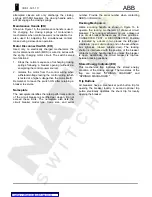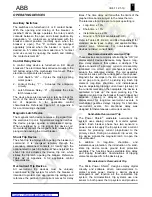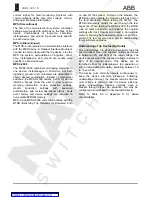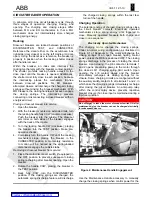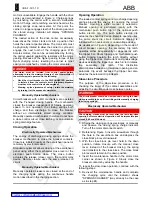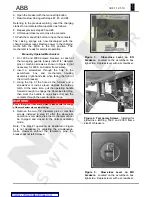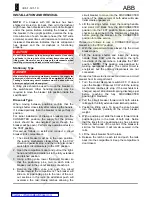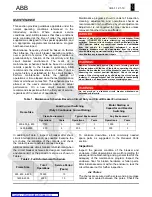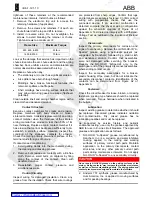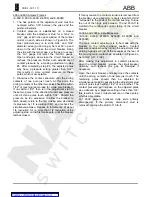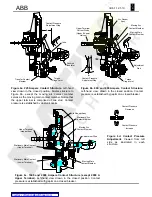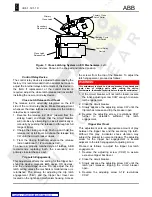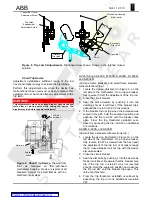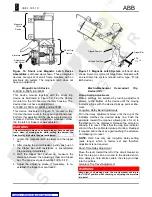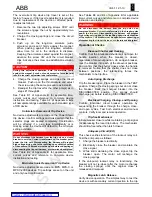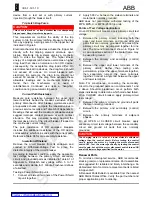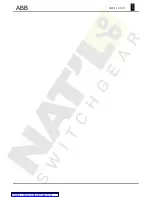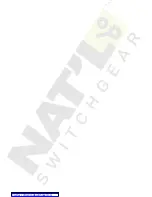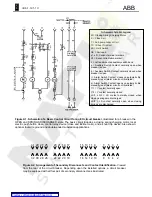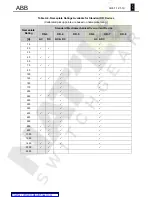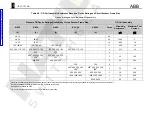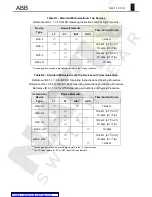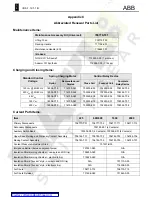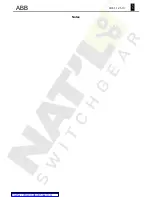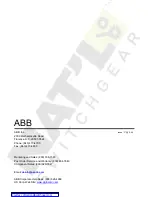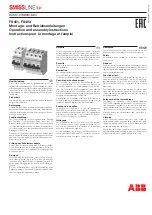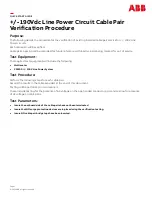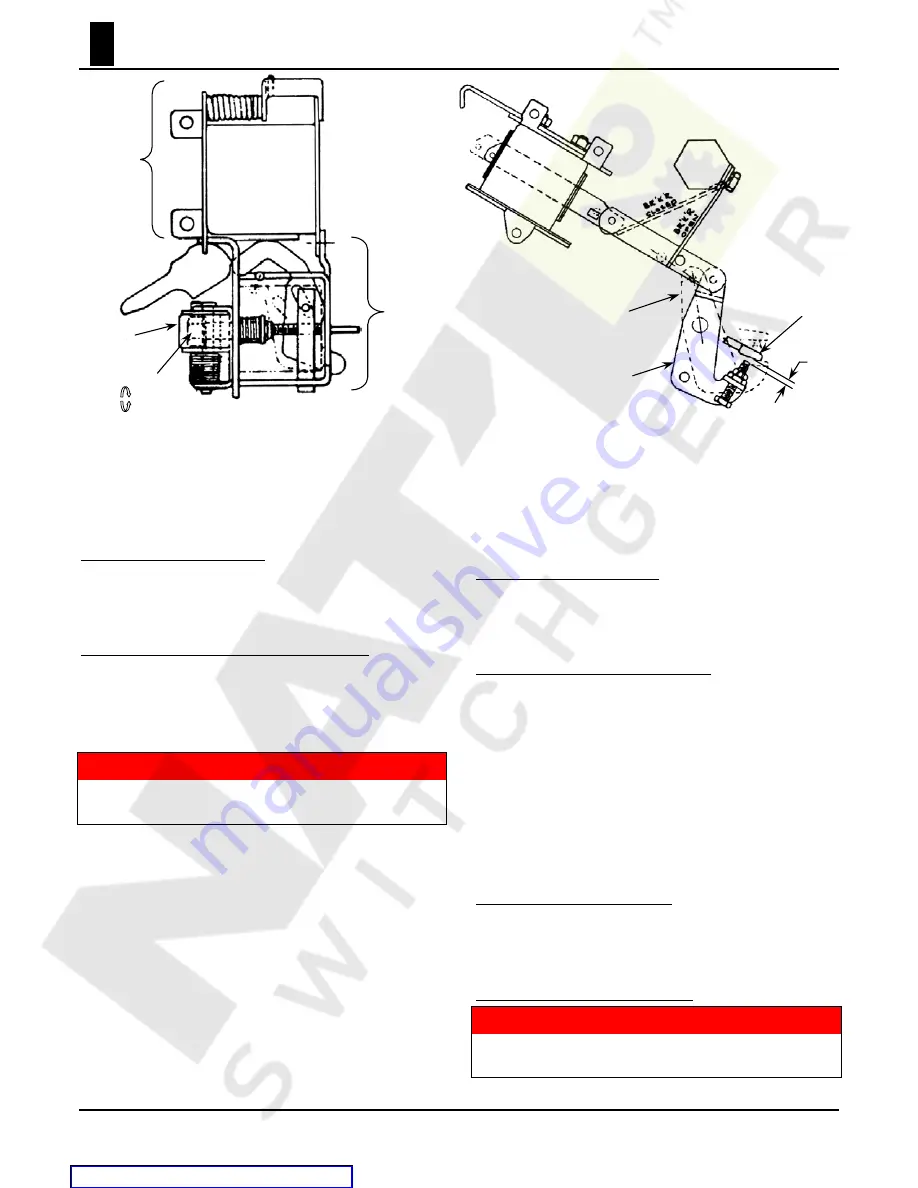
IB
6.1.12.1-1C
2
2
ABB
Magnetic Latch Device
K-600S, K-800S, & K-800M
This device mounts together with the shunt trip
device as illustrated in Figure 10. Find the device
mounted to the left-hand mechanism housing. The
device does not have an adjustment.
K-1600S, K2000S, K-1600M, and K-2000M
This device, illustrated in Figure 11, mounts to the
front mechanism cover in the upper right-hand area.
Perform this adjustment if the device was removed or
replaced. Perform this adjustment whenever either
the trip latch or tripper bar was adjusted.
WARNING
This adjustment is made on a closed breaker. Keep hands and
tools clear of moving parts while setting the device; the
breaker may trip before the point anticipated.
1. Locate the magnetic latch trip lever and the tripper
bar.
2. After closing the circuit breaker, gently push up on
the tripper bar until resistance is encountered.
Stop pushing immediately.
3. With the tripper bar pushed up, measure the
distance between the adjusting screw and tripper
bar. The pre-travel gap should be 1/4” to 5/16”.
4. Adjust the adjusting screw, if necessary, to re-
establish the tripper bar pre-travel.
Electro-Mechanical Overcurrent Trip
Device (OD)
Pickup Setting Adjustments
Pickup settings are selected by turning adjustment
screws on the bottom of the device until the moving
indicator aligns with the desired pickup point scribe-
mark.
Long-time Delay Band Adjustments
Turn the delay adjustment screw until the top of the
indicator matches the desired delay line. Push the
armature toward the magnet, allowing time for oil in
the dashpot to be displaced. Release the armature,
allowing it to reset. Check that the long-time indicator
still matches the calibrated pickup marking. Readjust
if required and recheck by again pushing the armature
and allowing it to reset.
NOTE:
OD-3 has only one long-time delay setting
(wide range) which is factory set and therefore
adjustment is not required.
Short-Time Delay Adjustment
Move the lever toward the left of the circuit breaker so
that the step pin can be moved to the desired short-
time delay pin hole. Make certain the step pin drops
into the pinhole.
Armature Trip Travel Adjustment
WARNING
Keep clear of all moving parts. The circuit breaker will trip to
the "OPEN" position while checking or adjusting the armature
trip travel.
Shunt Trip
Device
Magnetic
Latch
Device
Armature
Adjustment
Hex Screw
Figure 10. Shunt and Magnetic Latch Device
Assemblies.
Left-hand view shown. These integrated
devices are typical of small frame breakers with an
electronic trip system. The magnetic latch does not
have an adjustment.
Tripper Bar
5/16
1/4
in
Tripped Position
Latched Position
Figure 11. Magnetic Latch System.
Left-hand view
shown. System is typical of large frame breakers with
an electronic trip system (shown with a type “S” trip
latch device).

